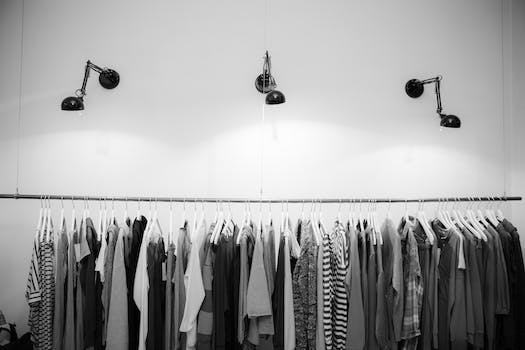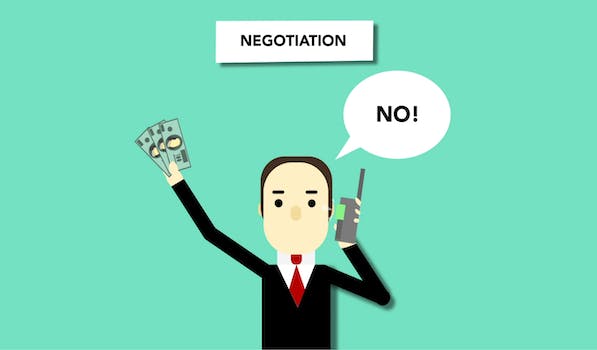How To Start A Business For Clothing
“From concept to creation: A step-by-step guide to launching your own clothing business.”
Introduction
Starting a business for clothing can be an exciting and rewarding venture. However, it can also be challenging and requires careful planning and execution. In this guide, we will provide you with some essential steps to help you start your own clothing business. From developing a business plan to sourcing materials and marketing your products, we will cover everything you need to know to get your clothing business up and running.
Finding Your Niche in the Clothing Industry
Starting a business in the clothing industry can be a daunting task, but with the right approach, it can be a fulfilling and profitable venture. One of the first steps in starting a clothing business is finding your niche. This means identifying a specific area of the clothing industry that you want to focus on and excel in.
One way to find your niche is to look at your personal interests and passions. If you have a love for vintage clothing, for example, you could start a business that specializes in vintage-inspired clothing. Or, if you have a passion for sustainable fashion, you could start a business that focuses on eco-friendly clothing.
Another way to find your niche is to look at gaps in the market. Is there a particular type of clothing that is in high demand but not readily available? For example, if you notice that there is a lack of stylish and comfortable workwear for women, you could start a business that specializes in this area.
Once you have identified your niche, it’s important to research the market and competition. Look at what other businesses are offering in your niche and identify what sets your business apart. This could be anything from unique designs to a focus on sustainability.
It’s also important to consider your target audience. Who are you designing your clothing for? What are their needs and preferences? Understanding your target audience will help you create clothing that resonates with them and sets your business apart from the competition.
When it comes to designing your clothing, it’s important to focus on quality and functionality. Your clothing should not only look good but also be comfortable and durable. Consider using high-quality materials and working with experienced manufacturers to ensure that your clothing meets these standards.
In addition to designing your clothing, you’ll also need to consider branding and marketing. Your brand should reflect your niche and target audience, and should be consistent across all aspects of your business, from your website to your social media presence.
Marketing your business can be done through a variety of channels, including social media, influencer partnerships, and advertising. It’s important to identify the channels that are most effective for reaching your target audience and focus your efforts on those.
Starting a business in the clothing industry can be challenging, but with the right approach, it can also be incredibly rewarding. By finding your niche, researching the market and competition, understanding your target audience, focusing on quality and functionality, and developing a strong brand and marketing strategy, you can set your business up for success.
Creating a Business Plan for Your Clothing Business

Starting a business for clothing can be an exciting and rewarding venture. However, it can also be a daunting task, especially if you are new to the industry. One of the most important steps in starting a clothing business is creating a business plan. A business plan is a roadmap that outlines your goals, strategies, and financial projections for your business. In this article, we will discuss the key elements of a business plan for a clothing business.
Executive Summary
The executive summary is the first section of your business plan. It should provide a brief overview of your business, including your mission statement, target market, and unique selling proposition. The executive summary should be concise and compelling, as it is often the first thing that potential investors or lenders will read.
Market Analysis
The market analysis section of your business plan should provide an in-depth analysis of the clothing industry. This includes information on your target market, competitors, and industry trends. You should also include information on your pricing strategy and how you plan to differentiate your brand from competitors.
Products and Services
In this section, you should provide a detailed description of the products and services that your clothing business will offer. This includes information on the types of clothing you will sell, your design process, and any unique features or benefits of your products. You should also include information on your suppliers and manufacturing process.
Marketing and Sales
The marketing and sales section of your business plan should outline your strategies for promoting and selling your clothing products. This includes information on your advertising and promotional campaigns, as well as your sales channels (e.g. online, brick-and-mortar, wholesale). You should also include information on your pricing strategy and any discounts or promotions you plan to offer.
Operations
The operations section of your business plan should provide information on the day-to-day operations of your clothing business. This includes information on your staffing needs, inventory management, and logistics. You should also include information on any equipment or technology you will need to run your business.
Financial Projections
The financial projections section of your business plan should provide a detailed analysis of your expected revenue and expenses. This includes information on your startup costs, sales projections, and cash flow projections. You should also include information on your funding needs and any potential sources of funding (e.g. loans, investors).
Conclusion
Creating a business plan for your clothing business is an essential step in starting your venture. A well-written business plan can help you secure funding, attract investors, and guide your business decisions. By including the key elements discussed in this article, you can create a comprehensive and effective business plan for your clothing business. Remember to keep your plan concise, compelling, and focused on your goals and objectives. With a solid business plan in place, you can confidently move forward with starting your clothing business.
Sourcing Materials and Manufacturers for Your Clothing Line
Starting a clothing business can be an exciting and rewarding venture. However, it can also be a daunting task, especially when it comes to sourcing materials and manufacturers for your clothing line. In this article, we will guide you through the process of finding the right materials and manufacturers for your clothing business.
The first step in sourcing materials for your clothing line is to determine the type of fabric you want to use. There are many different types of fabrics available, each with its own unique properties and characteristics. Some popular options include cotton, silk, wool, and polyester. Consider the style and function of your clothing line when choosing the fabric. For example, if you are creating activewear, you may want to choose a fabric that is moisture-wicking and breathable.
Once you have decided on the type of fabric you want to use, it’s time to find a supplier. There are many fabric suppliers available, both online and offline. Do your research and compare prices and quality before making a decision. You may also want to consider attending trade shows and networking events to meet potential suppliers in person.
In addition to fabric, you will also need to source other materials such as zippers, buttons, and thread. These items may seem small, but they are essential to the overall quality and functionality of your clothing line. Again, do your research and compare prices and quality before making a decision.
Once you have sourced your materials, it’s time to find a manufacturer to produce your clothing line. There are many manufacturers available, both domestic and overseas. Domestic manufacturers may be more expensive, but they offer the advantage of being able to visit the factory and oversee the production process. Overseas manufacturers may be cheaper, but they can be more difficult to communicate with and may have longer lead times.
When choosing a manufacturer, consider their experience, capabilities, and reputation. Look for a manufacturer that specializes in the type of clothing you are producing and has a proven track record of producing high-quality garments. You may also want to ask for references and samples before making a decision.
Communication is key when working with a manufacturer. Make sure you have a clear understanding of their production process, lead times, and pricing. It’s also important to establish a good working relationship with your manufacturer and maintain open lines of communication throughout the production process.
In conclusion, sourcing materials and manufacturers for your clothing line can be a challenging task, but with the right research and preparation, it can be a smooth and successful process. Remember to consider the style and function of your clothing line when choosing materials, and to do your research when selecting a manufacturer. With hard work and dedication, you can turn your clothing business dreams into a reality.
Building Your Brand and Marketing Your Clothing Business
Starting a clothing business can be an exciting and rewarding venture. However, building your brand and marketing your clothing business can be a daunting task. In this article, we will discuss some tips on how to build your brand and market your clothing business.
1. Define Your Brand
The first step in building your brand is to define it. Your brand is what sets you apart from your competitors. It is what makes your clothing business unique. To define your brand, you need to identify your target audience, your values, and your mission statement.
Your target audience is the group of people who are most likely to buy your clothing. You need to understand their needs, wants, and preferences. Your values are the principles that guide your business. They are the beliefs that you hold dear. Your mission statement is a statement that defines your purpose. It is a statement that explains why you exist as a business.
2. Create a Logo
Once you have defined your brand, the next step is to create a logo. Your logo is the visual representation of your brand. It is what people will see when they think of your clothing business. Your logo should be simple, memorable, and unique. It should be something that people can easily recognize and associate with your brand.
3. Develop a Website
In today’s digital age, having a website is essential for any business. Your website is your online storefront. It is where people will go to learn more about your clothing business and to make purchases. Your website should be easy to navigate, visually appealing, and mobile-friendly.
4. Use Social Media
Social media is a powerful tool for marketing your clothing business. It is a way to connect with your target audience and to build your brand. You should use social media platforms like Facebook, Instagram, and Twitter to promote your clothing business. You should post regularly, engage with your followers, and use hashtags to increase your reach.
5. Attend Trade Shows
Attending trade shows is a great way to market your clothing business. Trade shows are events where businesses showcase their products and services. They are a way to connect with potential customers and to network with other businesses in your industry. You should attend trade shows that are relevant to your clothing business and that attract your target audience.
6. Collaborate with Influencers
Collaborating with influencers is a great way to market your clothing business. Influencers are people who have a large following on social media. They can help you reach a wider audience and promote your clothing business. You should collaborate with influencers who are relevant to your clothing business and who have a following that aligns with your target audience.
In conclusion, building your brand and marketing your clothing business can be a challenging task. However, by defining your brand, creating a logo, developing a website, using social media, attending trade shows, and collaborating with influencers, you can successfully market your clothing business. Remember to stay true to your brand and to always put your customers first. With hard work and dedication, you can build a successful clothing business.
Managing Finances and Scaling Your Clothing Business
Starting a clothing business can be an exciting and rewarding venture. However, it can also be challenging, especially when it comes to managing finances and scaling your business. In this article, we will provide you with some tips on how to manage your finances and scale your clothing business successfully.
1. Create a Budget
The first step in managing your finances is to create a budget. A budget will help you keep track of your expenses and income, and it will also help you identify areas where you can cut costs. When creating a budget, make sure to include all your expenses, such as rent, utilities, inventory, marketing, and salaries. Also, make sure to set aside some money for unexpected expenses.
2. Keep Track of Your Inventory
Inventory is one of the most significant expenses for a clothing business. Therefore, it is essential to keep track of your inventory to avoid overstocking or understocking. Overstocking can lead to excess inventory, which can tie up your cash flow, while understocking can lead to lost sales. To manage your inventory effectively, consider using inventory management software that can help you track your inventory levels and reorder products when necessary.
3. Monitor Your Cash Flow
Cash flow is the lifeblood of any business, and it is essential to monitor it regularly. Cash flow is the amount of money that comes in and goes out of your business. To manage your cash flow, you need to keep track of your expenses and income, and make sure that you have enough cash on hand to cover your expenses. If you are experiencing cash flow problems, consider cutting costs, increasing sales, or seeking financing.
4. Invest in Marketing
Marketing is essential for any business, and it is especially important for a clothing business. Marketing can help you attract new customers, increase sales, and build brand awareness. To market your clothing business effectively, consider investing in social media marketing, email marketing, influencer marketing, and paid advertising. Also, make sure to track your marketing efforts to see what is working and what is not.
5. Expand Your Product Line
Expanding your product line can help you increase sales and attract new customers. To expand your product line, consider adding new styles, colors, and sizes to your existing products. You can also consider adding new product categories, such as accessories or shoes. However, make sure to do your research and test new products before investing too much money.
6. Hire the Right People
Hiring the right people is essential for scaling your clothing business. You need to hire people who are passionate about your brand and have the skills and experience to help you grow your business. When hiring, make sure to look for people who are a good fit for your company culture and have the right attitude.
In conclusion, managing finances and scaling your clothing business can be challenging, but it is essential for long-term success. By creating a budget, keeping track of your inventory, monitoring your cash flow, investing in marketing, expanding your product line, and hiring the right people, you can take your clothing business to the next level. Remember to stay focused, be patient, and always keep your customers in mind. Good luck!
Conclusion
To start a business for clothing, you need to have a clear idea of your target market, create a business plan, secure funding, and establish a strong brand identity. It is also important to research the industry and stay up-to-date with fashion trends. With hard work and dedication, starting a clothing business can be a rewarding and profitable venture.




